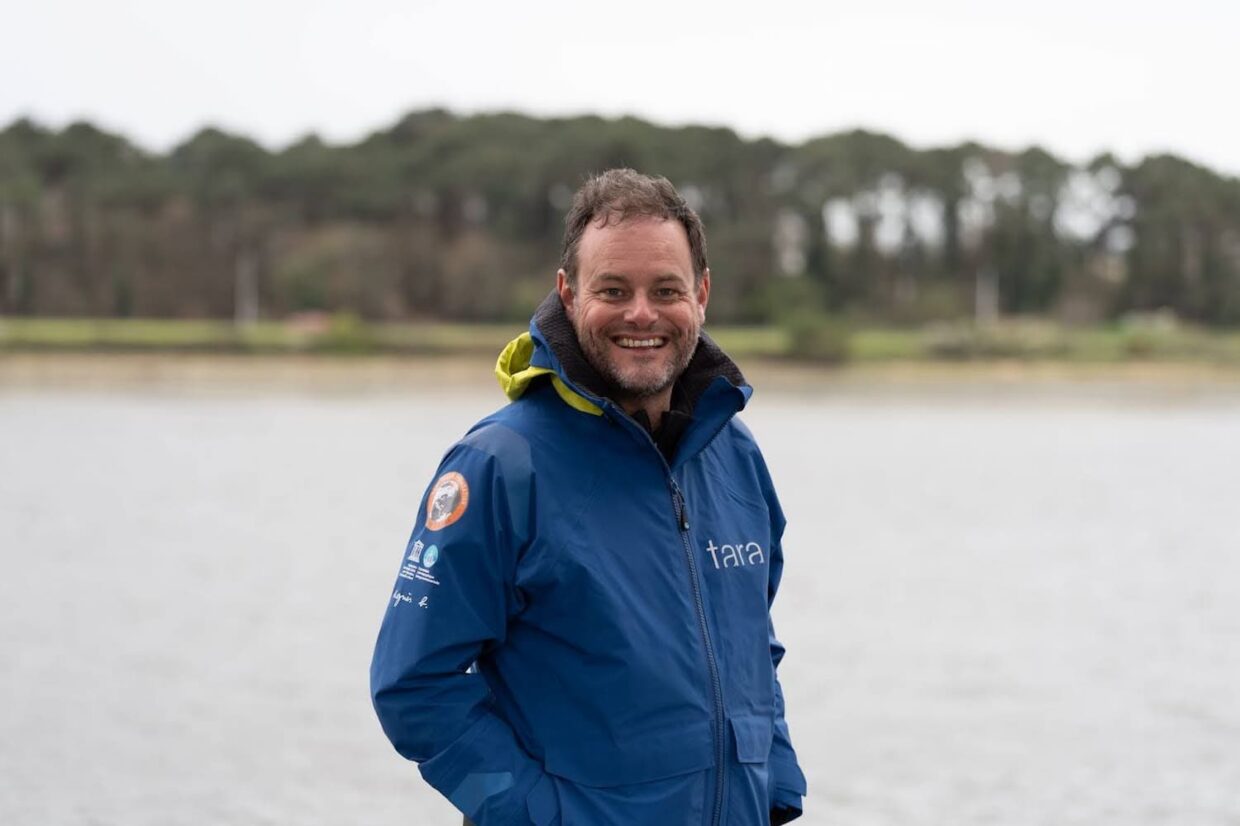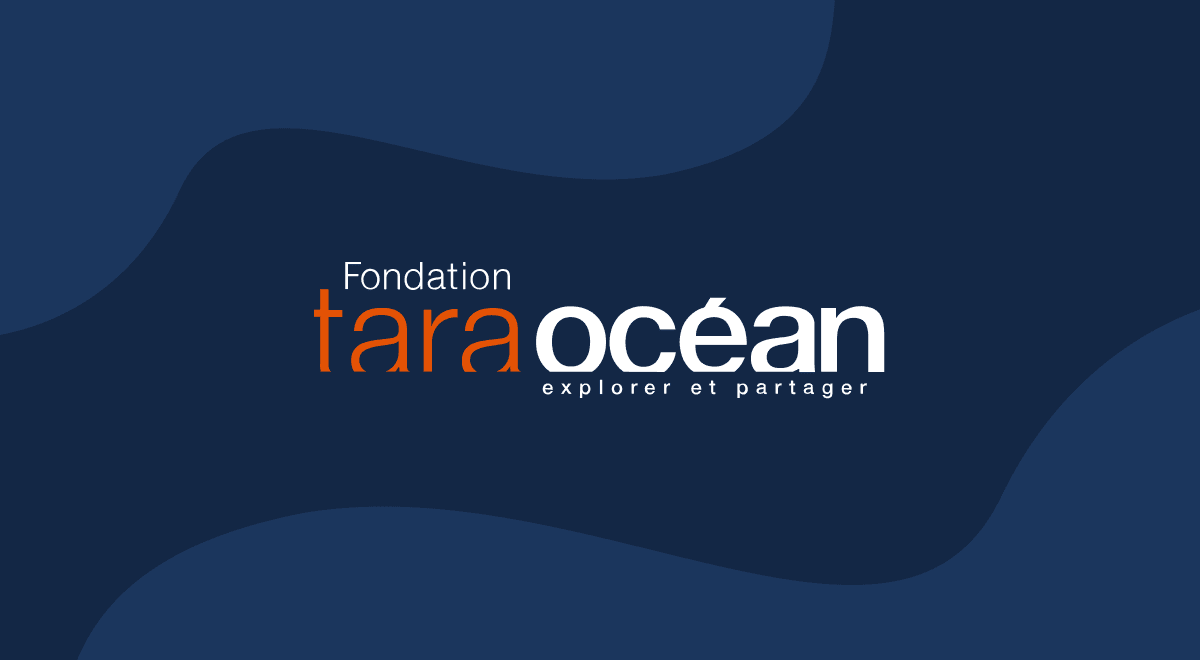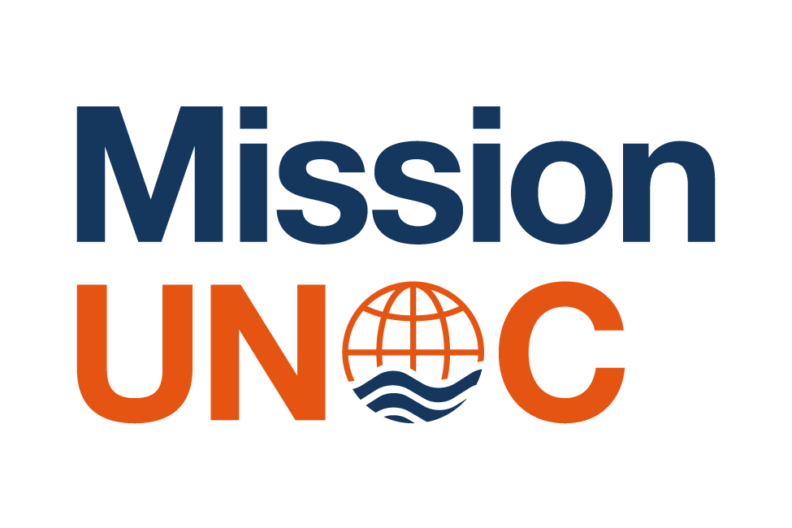[TREC/Tara Europa] Between land and sea, an unprecedented scientific expedition along the coasts of Europe
Since April 2023, a double sampling has been carried out: at sea aboard the schooner Tara, and on land using mobile laboratories. The Tara Europa/TREC (TRaversing European Coastline) expedition aims to: inventory and map life forms in water, sediments, soil and air along European coasts; understand interactions and biological functions between species and ecosystems; study the impact of chemical pollutants on biodiversity on land and at sea, and explore the impact of local and global climate change on living things.
An expedition coordinated by the European Molecular Biology Laboratory (EMBL) in collaboration with the Tara Oceans Consortium, the Tara Ocean Foundation and more than 70 scientific institutions. This mission brings together 150 researchers in about 30 countries. Interview with Colomban de Vargas, scientific director of the Tara Europa expedition.
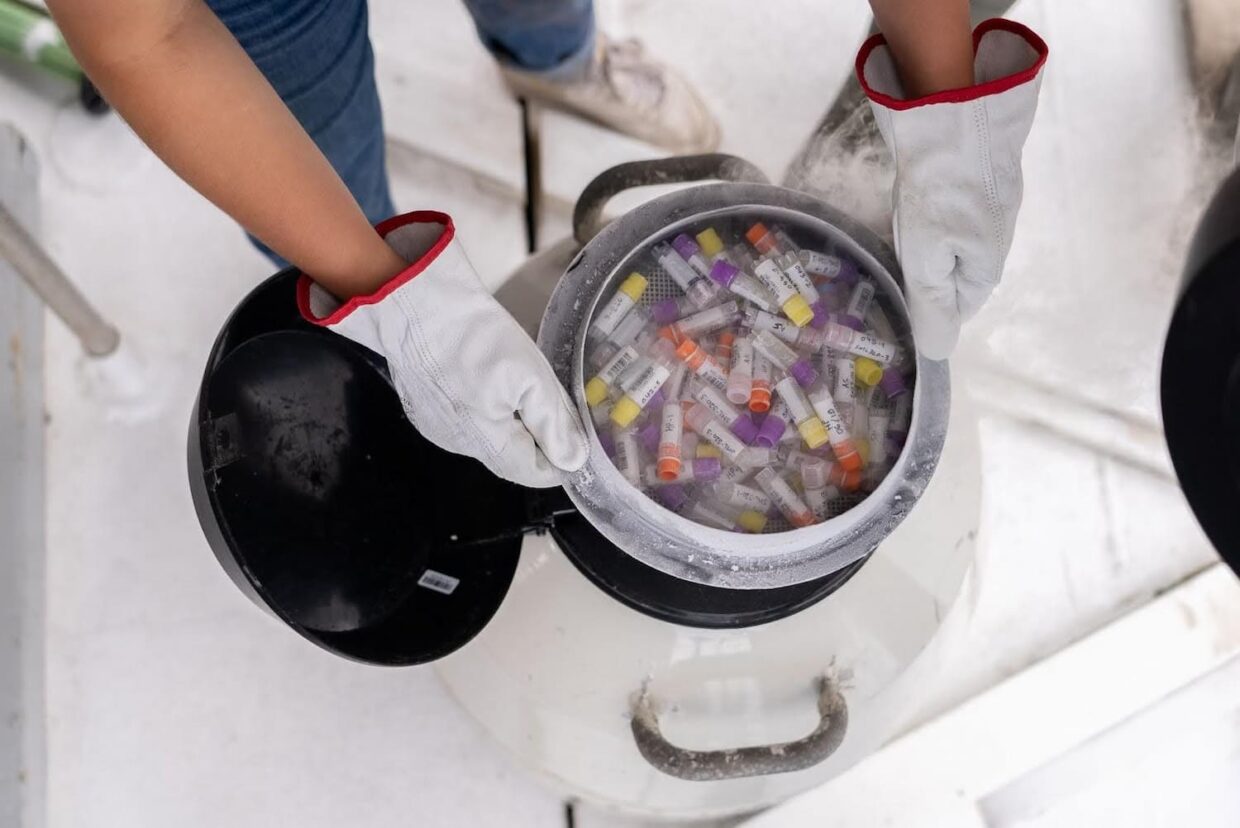
What is the Tara Oceans scientific consortium?
The Tara Oceans Consortium was created 15 years ago during an expedition led by an international consortium of researchers and the Tara Ocean Foundation. Our objective was to explore ocean microbiomes in order to identify which organisms are present, what they do, how and why they interact, with the purpose of understanding how they provide the ecosystem functions vital to the health of our blue planet, and therefore our health. During these explorations, carried out between 2009 and 2013, 40,000 samples were collected and are still being analyzed today!
Tara Oceans has accomplished remarkable scientific work, published in more than 150 articles, including several in the most renowned research journals. Today, the scientific community has a fairly accurate idea of the diversity of unicellular organisms, including viruses, in the upper layer of the global high seas.
Thanks to this research, scientists were able to: reconstruct the biogeography and environmental niches of hundreds of key ocean microbes,explore their interactions, and discover remarkable symbioses between them. Nearly 200 million different genes derived from these microorganisms were sequenced, some of which encode enzymes able to create new molecules for bio-medicine, or develop new industrial processes.
Our open-access data have in fact generated several hundred other scientific articles beyond the Tara Oceans Consortium, and are now a standard resource for studying marine life, its evolution and integration into the major mechanisms of the Earth system.
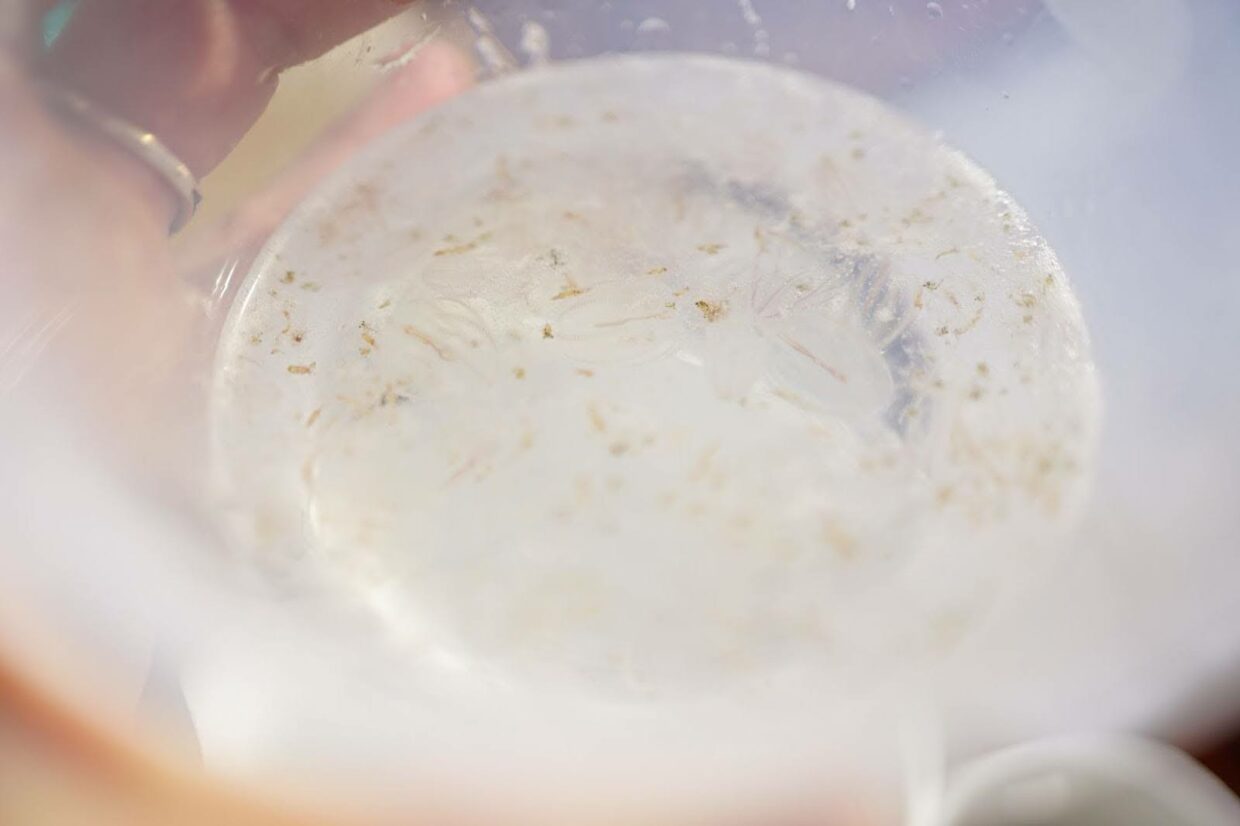
From one expedition to another: from Tara Oceans to Tara Europa
Following this holistic study of marine life in an ecosystem context, the Tara Europa expedition (the maritime component of TREC) is bringing a new set of ecosystem data from coastal waters to complement the extraordinary collection of marine microbiome information gathered during Tara’s expeditions over the past 15 years. Tara Europa also deploys new tools and protocols to explore and understand molecular and subcellular (inside the cell) components and processes at the heart of marine ecosystems.
Tara Europa/TREC will help us understand and protect the extraordinary wealth of our coasts.
Sampling on land and at sea
During this expedition, double sampling is being carried out. Samples are collected at the land/sea interface along environmental gradients that span habitats from inland to offshore: soils, marine sediments, beach and coastal waters, and aerosols…. Our objective is to understand to what extent all these ecosystems are interconnected, both in terms of ecology and evolution.
Our planet’s ecosystems are interrelated, thus they connect with each other. The Ocean is obviously an inseparable, continuous and coherent whole on a planetary scale, which is why Tara‘s expeditions have so far focused on marine ecosystems (cryosphere, plankton, plastic, coral). However, the Ocean is also influenced by its exchanges with continental ecosystems, as well as with the seabed, and even the atmosphere.
Land-sea gradients are being explored from Finland to Crete, covering the range of extreme environmental conditions in terms of temperature, acidification and deoxygenation, as predicted by worst-case climate change scenarios. These gradients are also located in regions affected by urban developments and tourism, intensive agriculture, and/or the massive inflow of freshwater and terrigenous compounds from rivers.
Ultimately, our objective is to carry out direct measurements of chemical pollutants, such as pharmaceuticals and pesticides, in a mosaic of environments on the scale of the European continent, and understand the impact of these pollutants on microbiomes, which are essential to ecosystem functioning and human health.
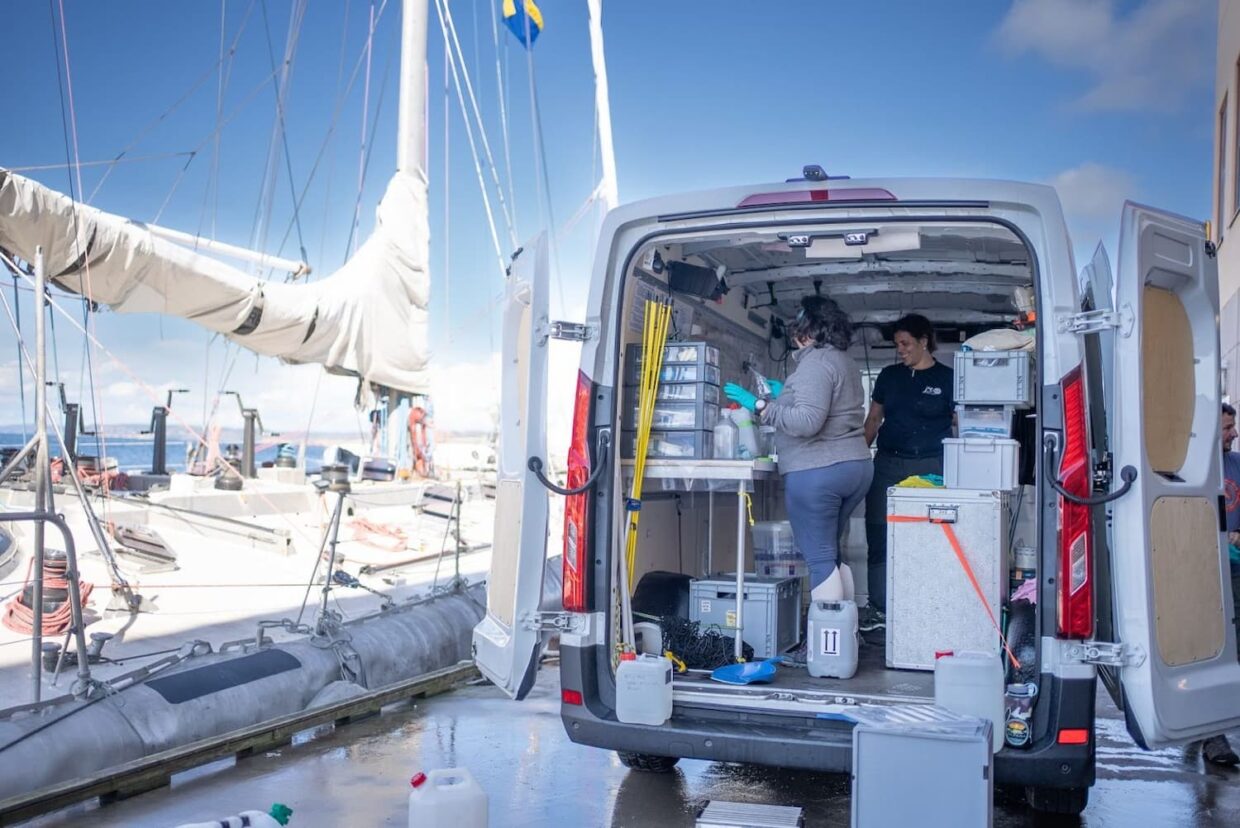
Is biodiversity on land better known and studied than at sea?
Surprisingly not!
“We certainly know continental macro-organisms, plants and animals better than those at sea — and much better than those on the ocean floor, which has been almost unexplored to date. As for invisible biodiversity, the vast majority of living things, we know far more about microorganisms in seawater than in soil. For a simple and good reason: There has not yet been any expedition similar to Tara Oceans dedicated to soil exploration!” explains Colomban de Vargas, scientific director of Tara Europa.
The Tara Oceans expedition (2009-2013) established a holistic vision, on a global scale, of the Ocean’s invisible biodiversity, from viruses to animals. There has not been an equivalent for soils and sediments. This is, in a way, what scientists are trying to accomplish during the Tara Europa/TREC mission.
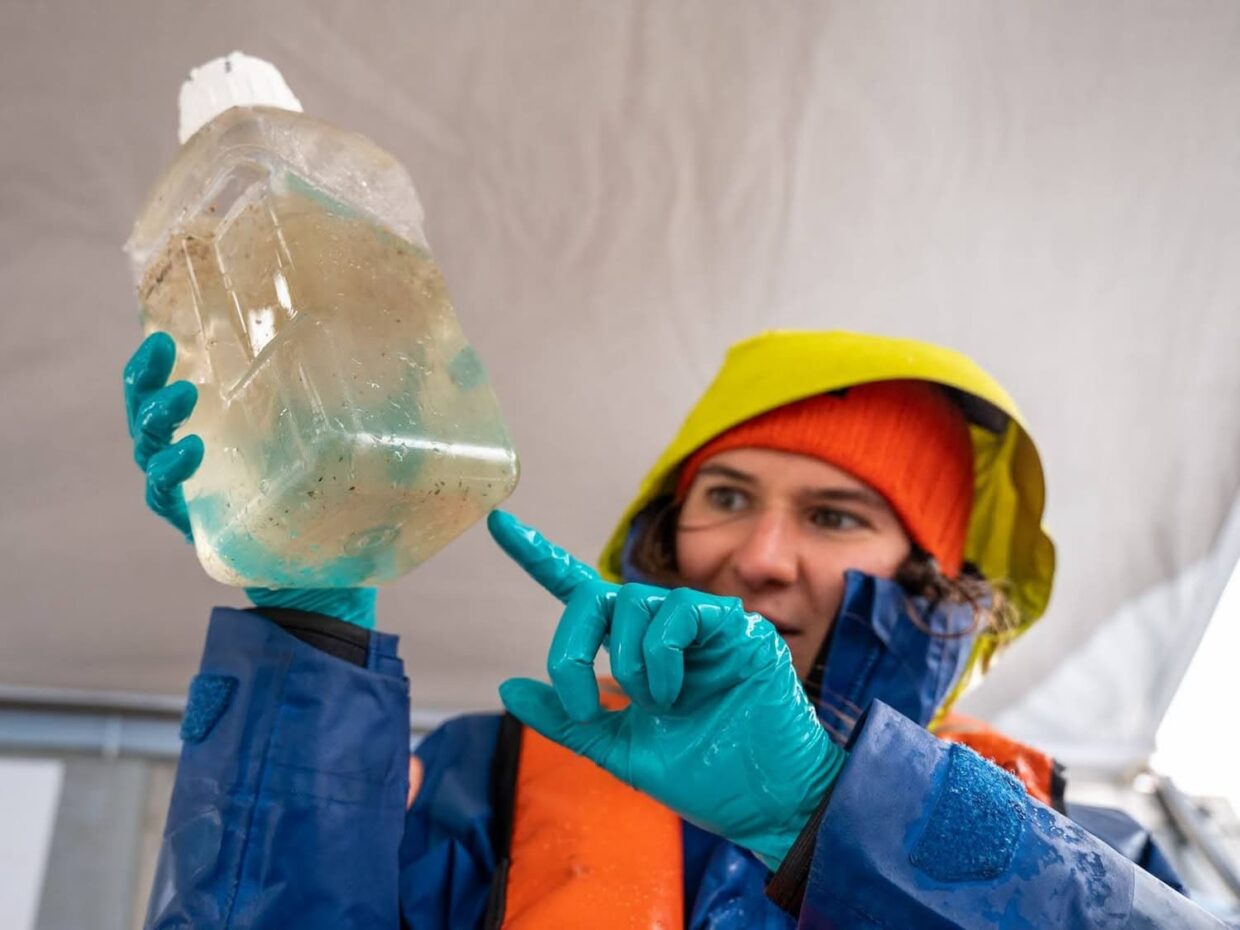
The secrets of coordinating land/sea logistics
The Tara Europa/TREC expedition was conceived following the ecosystem/holistic method developed for the Tara Oceans expedition , with physical, (bio)chemical, and mostly biological measurements covering the entire ecosystem, carried out by a team of about 30 coordinators using various technologies and representing different fields of study.
Through historical and real-time analyses of satellite data, and continuous, in situ measurements of oceanographic parameters using an automatic system set up aboard Tara, the best sampling sites are sought in coastal waters impacted by terrestrial sites sampled by the EMBL land team. More than 80 different protocols are then performed to measure bio-complexity in its environmental context. Innovative protocols allow scientists to interface with continental ecosystems — for instance, measuring hundreds of organic pollutants.
Sampling locations are determined in consultation with the land team. The most binding parameter is to find the right sampling points in soils, and especially in marine sediments, for reasons of composition (particle size, chemistry) and permits. As a result, the land sampling strategy often dictates Tara’s marine sampling area. Moreover, satellite data, local physical constraints (such as bathymetry, currents and tides), and navigation limitations discussed with the captain, also influence the choice of the most coherent sites to sample in each explored area.
The plankton freshly collected aboard Tara is immediately transferred to the EMBL Advanced Mobile Lab (ALM) so that molecular and cellular structures at the level of single cells can be analyzed. Thus, the TREC/Tara Europa expedition represents the most advanced and complete exploration of marine microbiomes and their interactions in the heart of various ecosystems.
According to Colomban, “All this is very dynamic and requires a lot of interactions between teams at sea, on land, in labs and offices — a true collective intelligence and a lot of WhatsApp calls!”
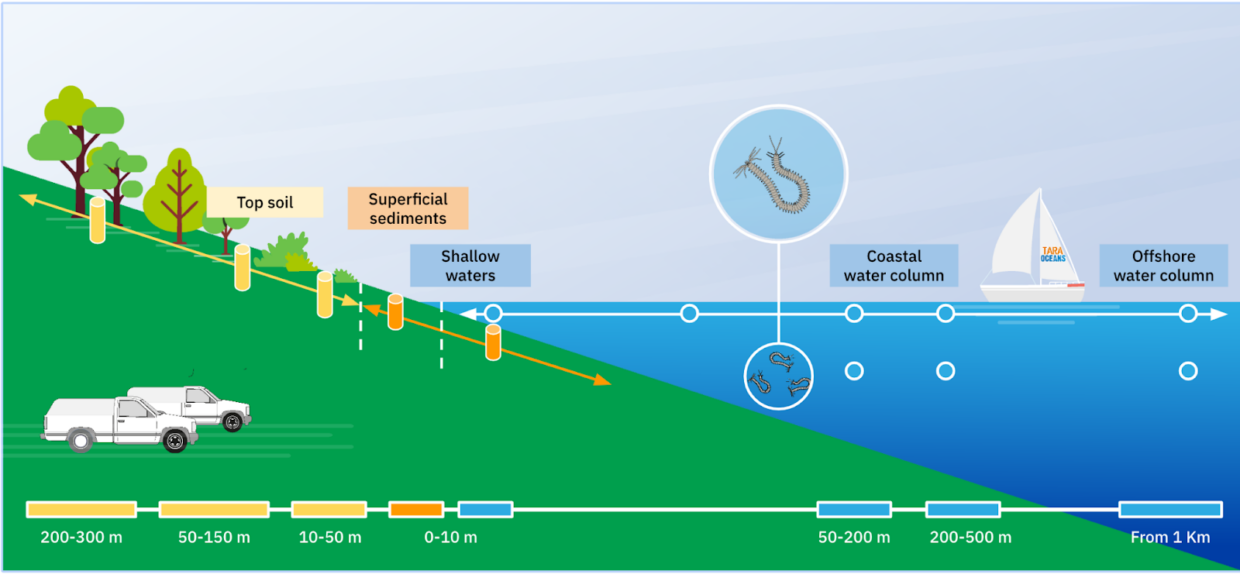
Setting out to discover life forms along European coasts
Variability of biodiversity depending on the ecosystem
Biodiversity can vary wildly along these land/sea gradients. During this expedition, various types of soil, sediments and water are being collected and analyzed — from estuaries and coastal waters, sometimes in relatively wild environments, or on the contrary, from ecosystems heavily impacted by agriculture, pharmaceuticals, ports and cities. The biodiversity is therefore measured in a mosaic of varied but interconnected environments, both on local and global scales.
Colomban expects: “the biodiversity discovered to be much greater than in all past Tara expeditions, and the sampling plan to be coherent and broad enough to identify stable patterns* despite the complexity and heterogeneity of the ecosystems explored.”
*Simplified model of a structure
A tree of life to be completed
What part of the tree of life are you seeking to complete?
With this expedition’s interconnections among terrestrial, marine, aerial and underground ecosystems, biologists will not only discover many new species, but also investigate the functioning of key groups to better understand them. Some branches of the tree of life are almost unknown, especially RNA viruses and many single-cell eukaryotes and protists. “It’s both heartbreaking and wonderful to realize that we only know a small fraction of the living organisms on Earth!” Colomban says. The desire to complete our knowledge is so strong that each team of researchers has its “favorites” among the tree branches, and all dream of understanding the intimate mechanisms of their organisms of choice.
Besides adding information to certain branches of the tree of life, Tara’s latest expeditions are helping us move towards what can be called “planetary biology”. This research focuses more on a global understanding of ecosystems by seeking to discover how life, as a whole, maintains and transforms ecosystems and climate, while evolving itself. In this context, it’s essential to sample the entire spectrum of living organisms: viruses, prokaryotes, eukaryotes, and even the vesicles and metabolites that cells release into the environment in order to communicate.
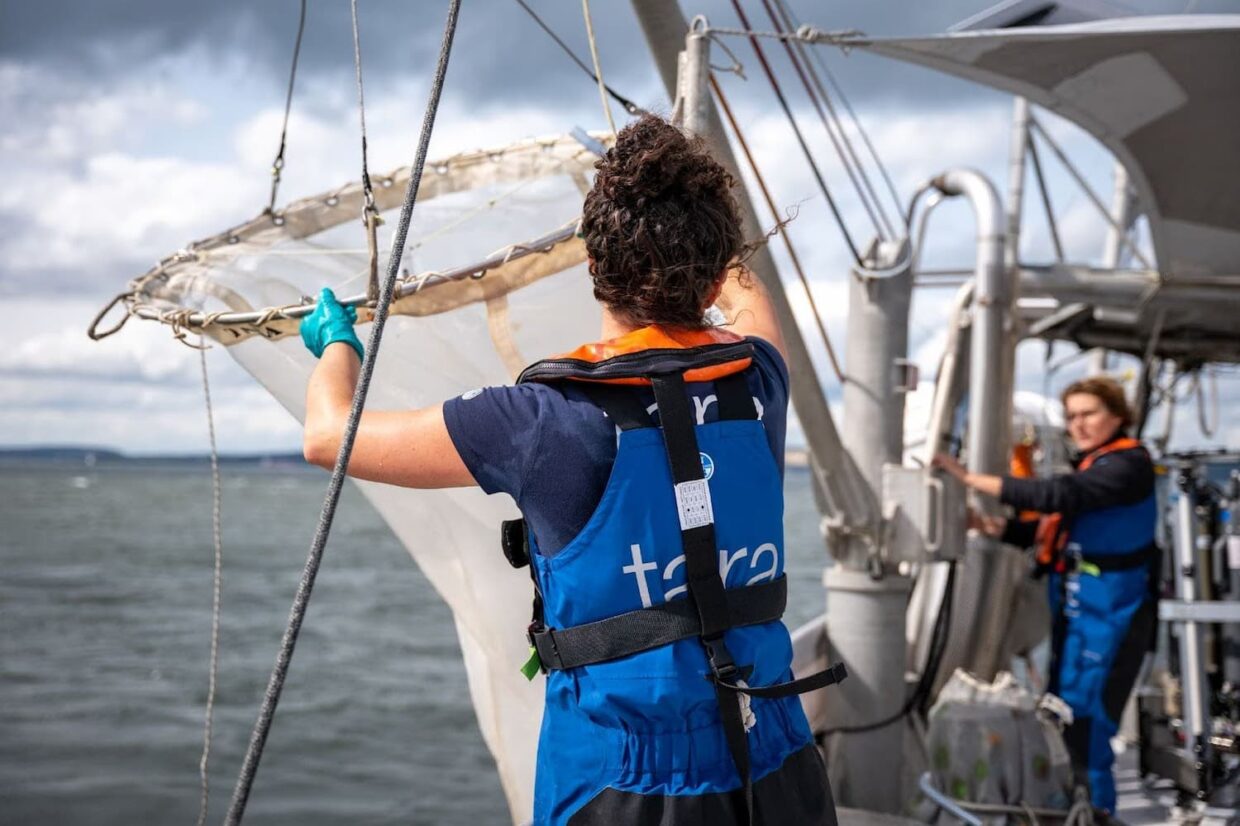
At what biodiversity scale are the analyses of the Tara Europa/TREC expedition carried out?
Invisible life (that not belonging to animals, plants, fungi and macroalgae) comprises the vast majority of the biodiversity of living organisms, the least known, and the one that constitutes most ecosystems. The microbiome is therefore the main target of the Tara Europa/TREC mission. However, this expedition also enables us to analyze the macrobiome through the DNA constantly released into the environment by visible organisms in the form of skin, mucus, gametes, etc. Finally, there are several teams, mainly within the European BIOcean5D* program linked to TREC/Tara Europa, which will measure the diversity of key macro-organisms and their microbiota (macroalgae, grass beds, sponges, and other invertebrates).
*This project brings together 3 major European research centers in molecular/cellular biology (EMBL), marine biology (EMBRC) and sequencing (Genoscope), as well as 27 partners from 11 countries, to build a unique suite of technologies and protocols enabling a holistic exploration of marine biodiversity, from viruses to mammals, from genomes to holobionts, across spatial and temporal scales from the preindustrial period to the present day. The focus is on understanding the land/sea gradients of biodiversity and its ecosystem services, thanks to combined efforts of the TREC expedition deploying mobile laboratories, the schooner Tara and associated vessels, as well as innovative citizen science, across 21 coastal countries and 35 marine laboratories, from Finland to Greece (2023-2024). New information is harmonized with existing results in a ‘data hub’ connected to international infrastructure. The knowledge produced is multi-scale, combines many technologies, and integrates a socio-ecosystemic level. Our data will feed and support: (i) new theories and models on the ecological and evolutionary dynamics and factors of marine biodiversity, (ii) a portfolio of new holistic indicators of marine ecosystem health, (iii) innovative methods and protocols for the economic and legal assessment of marine biodiversity and its services, integrating the dynamic and functional complexity of marine life.
The purpose of Tara Europa and BIOcean5D is also to link micro- and macro-biomes.
What method do you use to study the living throughout this expedition?
During the Tara Europa/TREC mission, an exceptional range of methods and instruments is deployed to study the living in all its dimensions and complexity. We are therefore able to measure:
- weight (biomass) and size of organisms
- taxonomy, genomes and genes, proteins and metabolites, morphological structures of organisms at the level of both individuals and populations.
Our objective is to answer the following fundamental questions:
- who is there?
- in what quantity?
- who does what?
“Biodiversity is so complex that all kinds of instruments must be used to measure its complexity in a rigorous and homogeneous manner, in all environments.” says Colomban.
At the population level, methods called ‘meta-omics’ are used. They allow us to measure a level of organization among the living (DNA, RNA, proteins, etc.) based on all the species present.
For example, meta-genomics involves:
- Pumping, a few liters of seawater aboard Tara, and filtering invisible organisms through a small membrane, kept cold in liquid nitrogen until it is transferred to the laboratory
- Extracting the total DNA of all organisms concentrated on each membrane at the Genoscope, and sequencing a maximum of DNA by billions of small sequences
- Reconstructing, using a computer, the puzzle of DNA sequences by aligning them and comparing them to existing sequence databases, sometimes determined by their taxonomy and/or function.
For a single seawater sample, tens of millions of DNA sequences are identified. They are sometimes related to a known function and/or organism, but often they are new to science: “We use this information to understand which organisms are present, in what number and what for.”
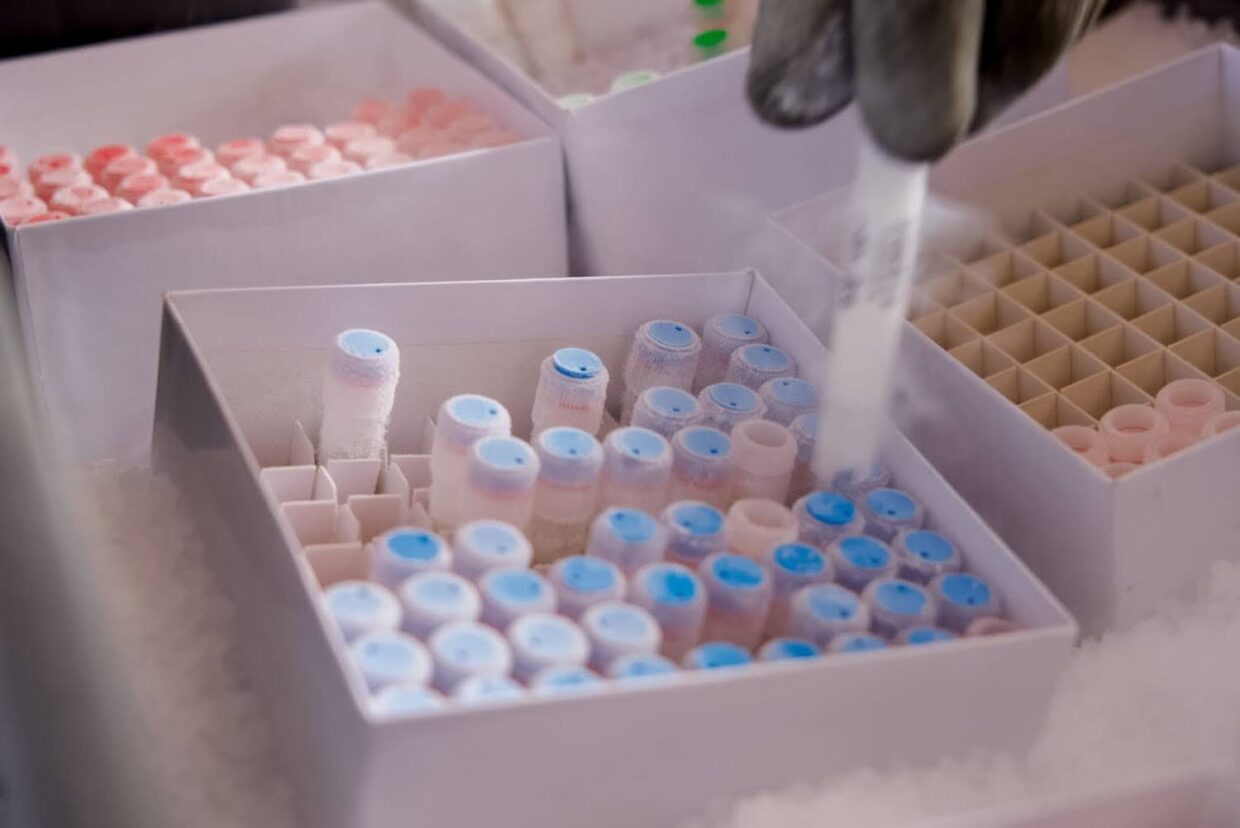
Impact of interactions between ecosystems and pollutants on the evolution of life forms.
By measuring living organisms and a broad spectrum of organic pollutants in a mosaic of more or less polluted environments between land and sea, scientists aim to:
- uncover unknown biodiversity (genes, molecules, species) in all explored ecosystems
- understand how these organisms are interconnected, both through natural and anthropogenic mechanisms.
For example, freshwater coming from rivers and runoff constantly bring organisms and molecules into the Ocean, carrying them from one ecosystem to another. They then may contribute to the adaptation of their new ecosystem to environmental changes, and therefore its evolution.
Specific genetic functions could also be transferred from land to sea through the integration of ‘terrestrial’ genes into the genomes of marine species (or conversely of marine genes into terrestrial life forms).
“We will seek to understand how and how many ecosystems co-evolve, and what is the impact of pollutants on marine and terrestrial biodiversity, in particular their co-evolution mechanisms” explains Colomban.
What excites you most about Tara Europa/TREC?
“The Earth is the ultimate ecosystem, and the TREC/Tara Europa approach offers for the first time a planetary biology worthy of the name!” says Colomban.
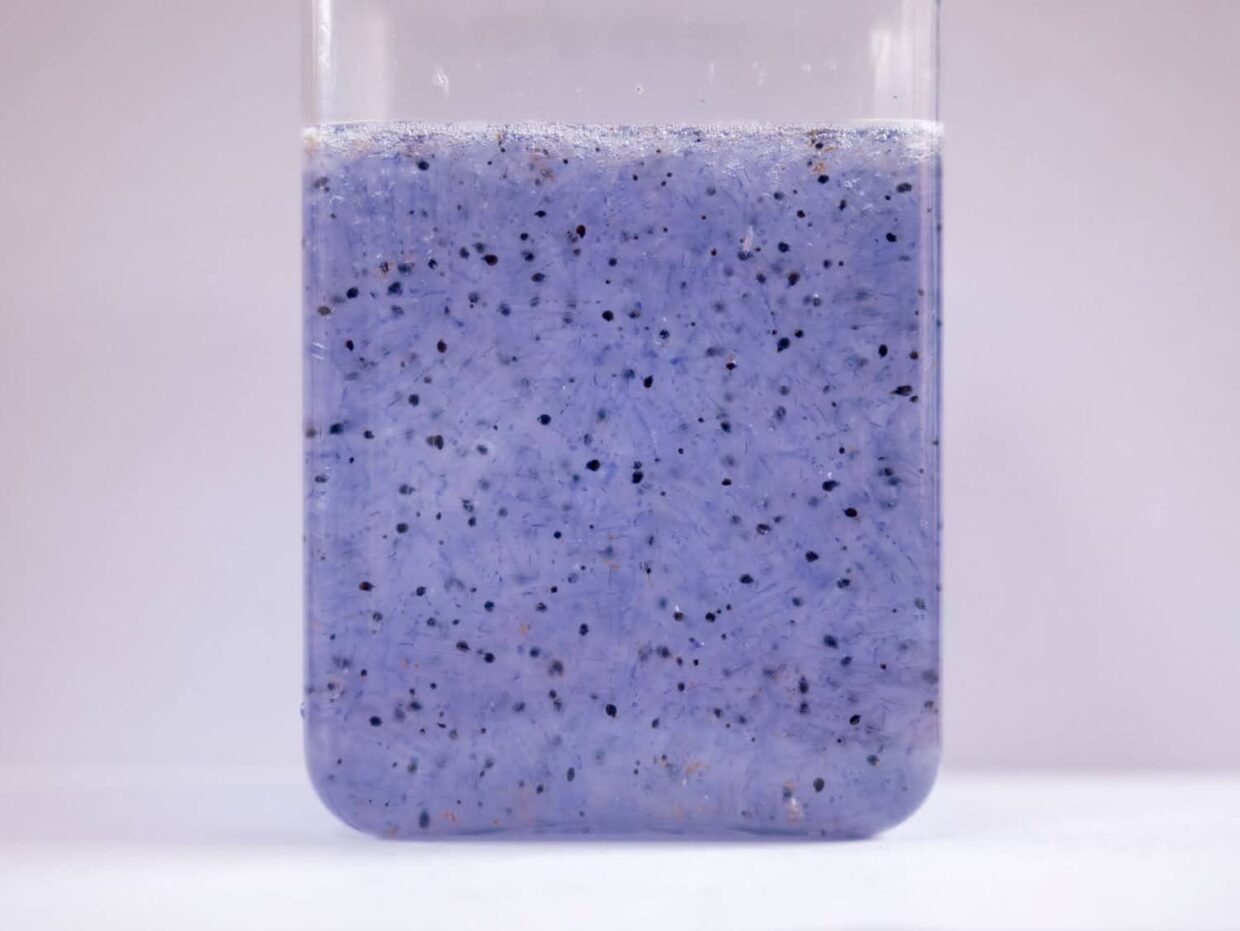
Colomban de Vargas, scientific director of Tara Europa:
Curiosity above all
From an early age, Colomban wondered about the functioning of the world and our biological origins. Later, he chose to become a researcher to “keep a child’s openness and capacity for wonder”, satisfy his thirst for knowledge, explore ecosystems and meet the beauty of living things, surrounded by passionate colleagues.
Scientific career
After receiving his PhD at the University of Geneva (Switzerland) in 2000, Colomban completed a postdoctoral fellowship at Harvard University (USA). He then became an associate professor at Rutgers University (USA) from 2000 to 2005, before joining the CNRS in France in 2006.
Passionate about the evolution of biodiversity in relation to that of the Earth system, he has participated in more than 30 oceanographic expeditions, and (co)directed large-scale marine life exploration programs (BioMarKs, Tara Oceans, Oceanomics, Tara Microbiome, TREC/Tara Europa, BIOcean5D, Bougainville mission). His work — at the interfaces between life and Earth sciences, on molecular, cellular and planetary scales — contributes to the development of planetary biology.
Based at the Roscoff biological station, Colomban currently runs the Tara GOSEE (Global Ocean Systems Ecology & Evolution) Research Federation and the international program Plankton Planet.
Between cellular and planetary evolution
Colomban is particularly interested in biodiversity and the evolution of eukaryotes: “These complex cells contain a nucleus, organelles, and active membranes that allow them to move, communicate, and swallow other cells.” About 700 million years ago, eukaryotes, still unicellular organisms, began to diversify. Since then, they have played a major role in the functioning of our biosphere, given birth to animals, and later on, plants. Recent research helps us understand the dynamics and mechanisms of diversification and complexification of these cells, which appear to evolve more through collective behaviors and symbiosis than through competition.
Focus on planetary biology
According to Colomban: “The Earth is a planet filled with living forms, most of them invisible to our eyes and almost unknown. However, these microorganisms not only produce the matter and molecules that feed us, heal us and allow us to breathe (oxygen), they also generate the ecosystems we live in, and even contribute to the Earth’s evolution as a whole, like a giant cell floating and growing irreversibly in space. Understanding the principles underlying the evolution of the living in all its complexity and diversity, on a planetary scale, is, in my opinion, THE question of the century. Answering this question will contribute to the possibility of our survival on a living planet.”
